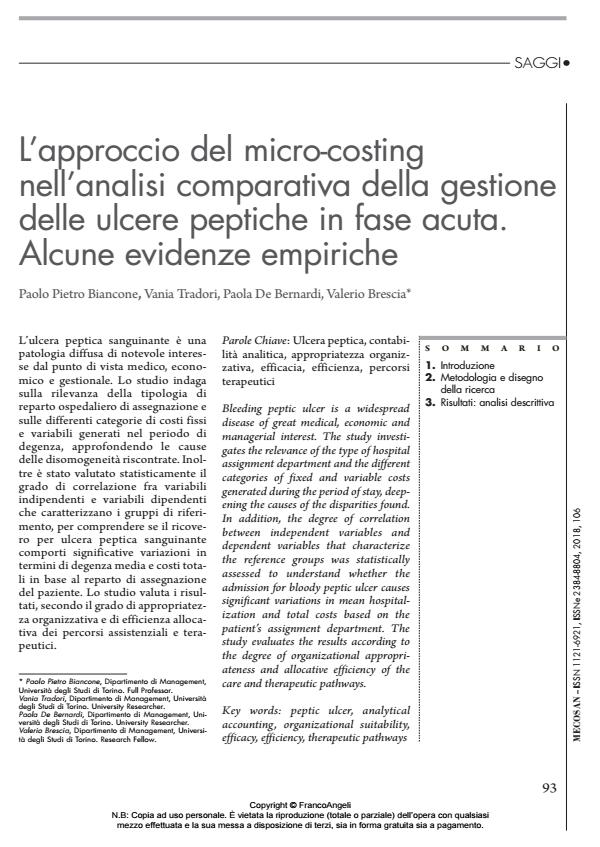L’approccio del micro-costing nell’analisi comparativa della gestione delle ulcere peptiche in fase acuta. Alcune evidenze empiriche
Journal title MECOSAN
Author/s Paolo Pietro Biancone, Vania Tradori, Paola De Bernardi, Valerio Brescia
Publishing Year 2019 Issue 2018/106
Language Italian Pages 18 P. 93-110 File size 437 KB
DOI 10.3280/MESA2018-106005
DOI is like a bar code for intellectual property: to have more infomation
click here
Below, you can see the article first page
If you want to buy this article in PDF format, you can do it, following the instructions to buy download credits

FrancoAngeli is member of Publishers International Linking Association, Inc (PILA), a not-for-profit association which run the CrossRef service enabling links to and from online scholarly content.
Bleeding peptic ulcer is a widespread disease of great medical, economic and managerial interest. The study investigates the relevance of the type of hospital assignment department and the different categories of fixed and variable costs generated during the period of stay, deepening the causes of the disparities found. In addition, the degree of correlation between independent variables and dependent variables that characterize the reference groups was statistically assessed to understand whether the admission for bloody peptic ulcer causes significant variations in mean hospitalization and total costs based on the patient’s assignment department. The study evaluates the results according to the degree of organizational appropriateness and allocative efficiency of the care and therapeutic pathways.
Keywords: Peptic ulcer, analytical accounting, organizational suitability, efficacy, efficiency, therapeutic pathways
Paolo Pietro Biancone, Vania Tradori, Paola De Bernardi, Valerio Brescia, L’approccio del micro-costing nell’analisi comparativa della gestione delle ulcere peptiche in fase acuta. Alcune evidenze empiriche in "MECOSAN" 106/2018, pp 93-110, DOI: 10.3280/MESA2018-106005